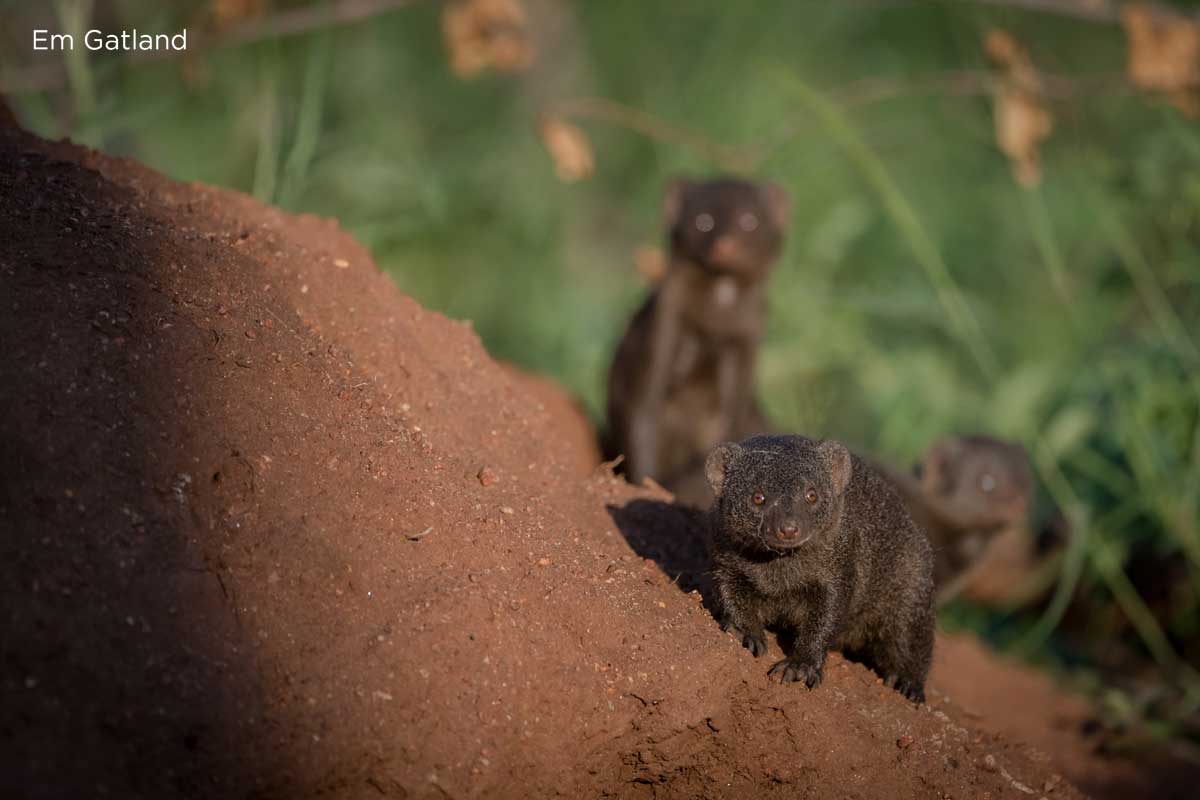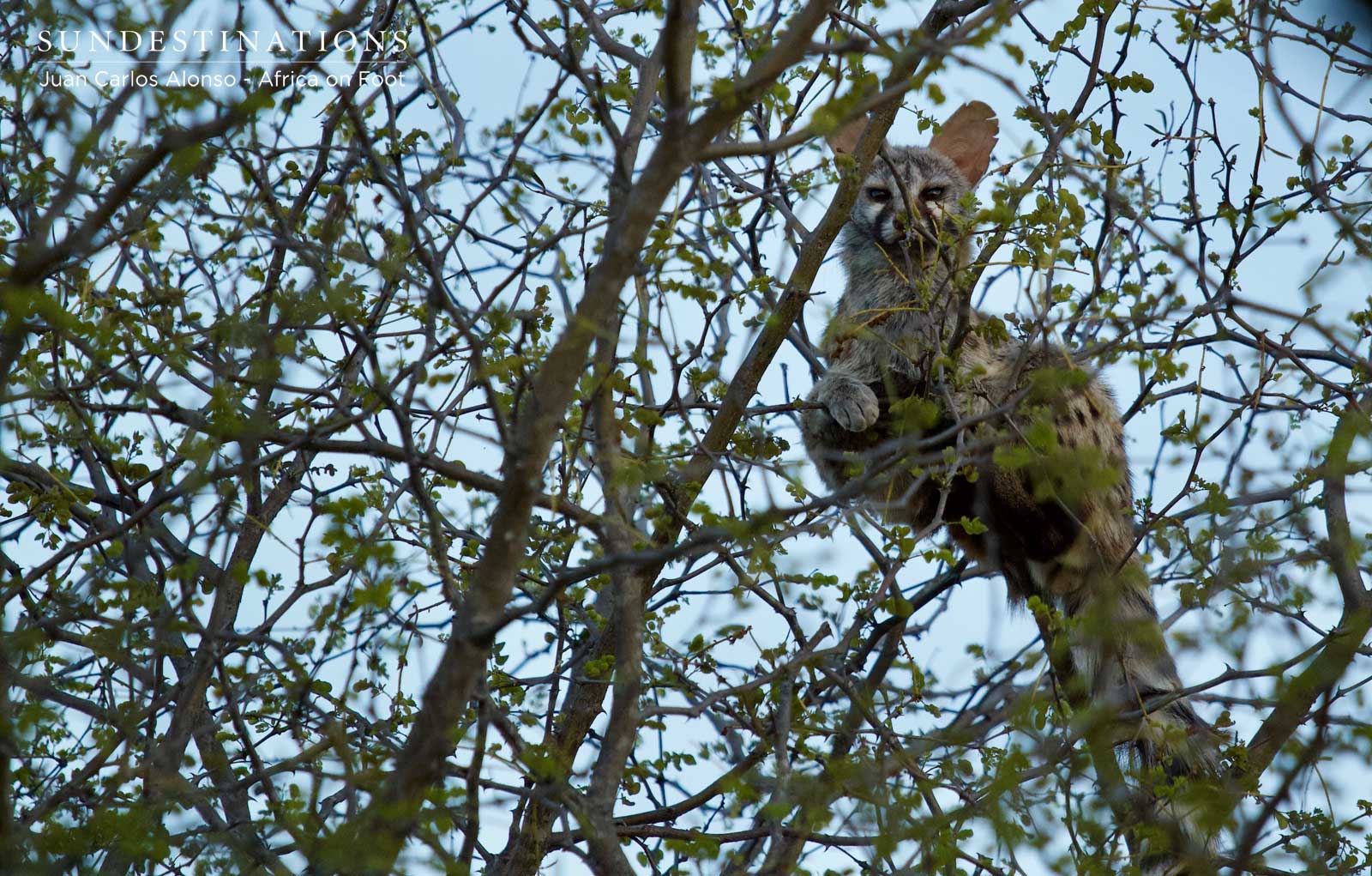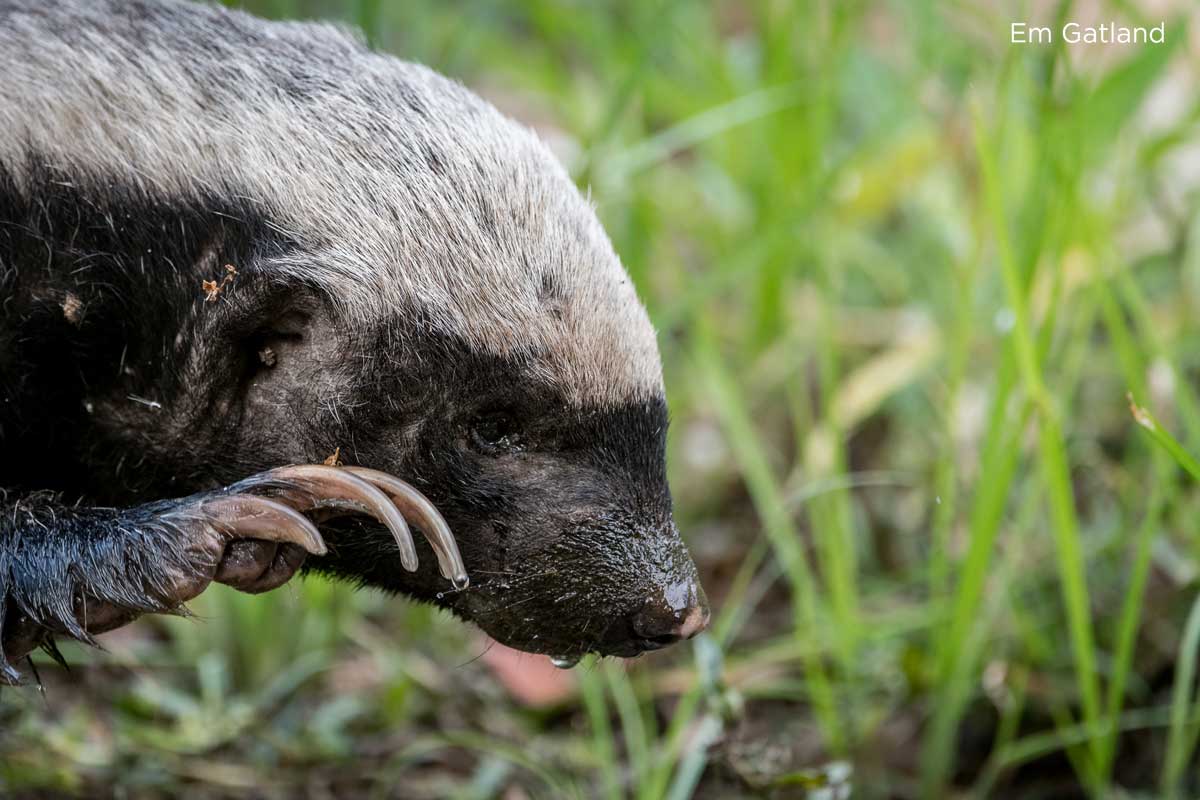It was a hard selection and quite tough to narrow down our top 5 small animals to spot on safari in the Kruger, but we managed to filter through the forgotten bundles of fluffs to deliver a small assortment of animals. The big five are most certainly the most sought after animals to spot in the bushveld, but it’s always rewarding when you find the Kruger’s smallest carnivore flushing out grubs and grooming their coarse hair to impress a potential mate. The ‘veld is alive with activity from the smaller creatures that are sidelined in favour of big game. Seek out your primary list of wildlife to see, but think about adding these small animals to your safari tick list.
Dwarf Mongoose
The somewhat petite dwarf mongoose is a fascinating species. Typically, they live in disused termite mounds in communities of up to 30 individuals. The community is led by a rather dominant and bossy alpha female that generally has a male sidekick. The duo is responsible for the well-being and success of the community. There are various duties to perform within the cohesive community, with the sentry duty being of great importance. Sentry duty involves one or more mongooses occasionally bolting up from the ground to scan their surrounds for imminent danger. They keep guard while others forage.
They are the smallest carnivore in Africa and thrive on a diet of grubs, insects, snakes and rodents. They forage in the low lying shrubbery and between fallen trees and are often seen together with southern yellow-billed hornbills. Dwarf mongoose are constantly in search of food during the day, which makes them fairly easy to spot. They do tend to scurry around at a lightning pace, so if there’s an opportunity to take a photo then please do!

Lesser Bushbaby
The lesser bushbaby is a minuscule nocturnal critter with alarmingly large eyes. Its disc-shaped eyes are a dead giveaway to its species. These tree-dwelling primates actually have tiny hands resembling miniature human hands. They’re loners with a nervous disposition, and if startled they will leap a whopping 3m between branches. Their diet comprises mainly gum and small insects, and they have an incredible ability to catch insects mid-air. Look out for this small acrobat during your night game drive.
Genet
This tiny mammal hides away deep within hollow trees and dense thickets and is nocturnal. It’s a solitary creature belonging to the civet family and they certainly aren’t afraid of encroaching on areas where there are humans. Genets have tiny pointy faces and slender bodies scattered with black dots – look up to the trees and you’ll spot them hiding out.

Honey Badger
Ruthlessly cute. The robust honey badger is the only animal that manages to own this oxymoron. The honey badger is completely fearless and will happily waltz through a pride of lions, eat a venomous cobra, break into fridges at safari lodges, and raid kitchens. Their stout stature and skunk-like appearance give them quite an endearing look. Don’t be fooled – this ratal species is fearsome.
The honey badger is a very powerful animal. It has blade-like claws which are used for digging up burrows to sleep in, and for stripping bark from trees to access food sources. Honey badgers will just as easily sleep on a couch in a lodge, in an aardvark’s burrow and any other available den. They love a bit of confrontation and will fight for what they want, whether it’s food or a place to sleep. Their robust bodies can easily handle a scuffle and showdown. They have a thick skin which is actually a rubbery epidermis that is very “loose fitting”. It’s also easy for them to writhe out of the jowls of an overeager carnivore.

Warthog
Sounder of warthog dart through the Kruger bushveld in search of nutritious items to fill their rotund bellies. They thrive on a feast of berries, vegetation and bulbs; and are constantly seen grazing. Their tusks are fantastic tools and are used to battle against predators. If the bulbs they want to access are buried deep within the soil, they will use their snouts and tusk to dig up the ground. Their name? It’s derived from warts on the side of the face that protect their delicate parts. Males have 4 warts and females have 2.

